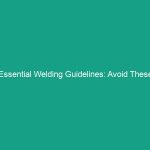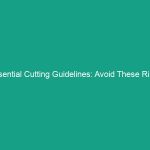Good morning team!
Today, we’re going to discuss a crucial aspect of Workplace Safety: respirator Maintenance guidelines. Understanding how to properly maintain and care for respirators is essential to ensure your Safety and health while on the job. This is especially important in environments where airborne contaminants can pose serious health risks. So, let’s dive into why this topic is vital for each one of you.
Understanding Respirator Maintenance Guidelines
Respirator maintenance guidelines refer to the set of practices and Procedures designed to ensure that respirators function correctly and provide adequate protection. Proper maintenance is critical as it directly impacts the effectiveness of the respirator in filtering harmful airborne particles and gases. Many employees may mistakenly believe that as long as they wear their respirators, they are safe. However, without proper maintenance, respirators can fail, leading to serious health consequences.
Key Hazards, Risks, and Safety Considerations
Not adhering to respirator maintenance guidelines can result in several key Hazards:
- Inadequate Filtration: A poorly maintained respirator may not filter out harmful particles effectively, exposing you to respiratory hazards.
- Increased Breathing Resistance: Accumulated debris can make it harder to breathe through the respirator, leading to fatigue and decreased work performance.
- Physical Damage: Regular wear and tear can damage the respirator, which may not be immediately visible, leading to a false sense of security.
Ignoring these maintenance practices can result in respiratory illnesses, decreased productivity, and potential workplace accidents. It’s crucial to recognize the real-world consequences of neglecting respirator care.
Best Practices, Procedures, & Actionable Advice
Let’s go through some Best Practices for respirator maintenance that you can implement immediately:
1. Daily Inspection
Before each use, inspect your respirator for:
- Cracks or damage to the facepiece.
- Worn or damaged straps.
- Clogged filters or cartridges.
- Secure fit and proper sealing against the face.
If you notice any issues, do not use the respirator and report it for repairs or replacement.
2. Cleaning and Disinfection
Regular cleaning is vital to ensure respirators remain functional and hygienic. Follow these steps:
- Use mild soap and warm water to clean the respirator.
- Pay special attention to areas that come into contact with your skin.
- Disinfect using a solution recommended by the manufacturer, ensuring it is safe for the materials of your respirator.
Let the respirator air dry completely before storing it.
3. Proper Storage
Store your respirator in a clean, dry place away from direct sunlight and extreme temperatures. Consider using a breathable bag or container to protect it from dust and damage.
4. Regular Replacement of Filters and Cartridges
Follow the manufacturer’s recommendations for replacing filters and cartridges. Keep in mind that filters have a limited lifespan and should be changed regularly, especially if you notice increased breathing resistance.
5. Training and Education
Participate in regular Training sessions to stay updated on Best Practices and any new safety protocols regarding respirator use and maintenance. Understanding how to properly use and maintain your respirator is critical to ensuring your safety.
Case Study: Real-World Incident
Consider the case of a construction worker who ignored maintenance protocols. They continued to use a respirator with a clogged filter, leading to respiratory distress while working in a dusty Environment. This incident could have been avoided with regular maintenance and adherence to safety protocols.
Regulations, Standards, and Compliance
It’s essential to follow relevant safety Regulations and Standards, such as those set forth by OSHA (Occupational Safety and Health Administration). These standards require employers to provide appropriate respiratory protection and ensure that employees are trained on proper use and maintenance. Compliance not only protects employees but also helps avoid legal repercussions for the company.
Employee Engagement & Discussion
Now, let’s open the floor for discussion. What safety challenges have you encountered related to respirator use? Are there any specific experiences you’d like to share regarding respirator maintenance or issues you’ve faced while using them? Your insights are valuable and can help us all improve our safety practices.
Conclusion & Key Takeaways
In summary, proper respirator maintenance is crucial for ensuring safety in the workplace. Remember to conduct daily inspections, clean your respirator regularly, store it properly, replace filters as required, and participate in ongoing training. By following these guidelines, you will not only protect yourself but also contribute to a safer work environment for everyone.
Thank you for your attention and commitment to safety. Let’s prioritize these practices and ensure we all go home healthy and safe!


